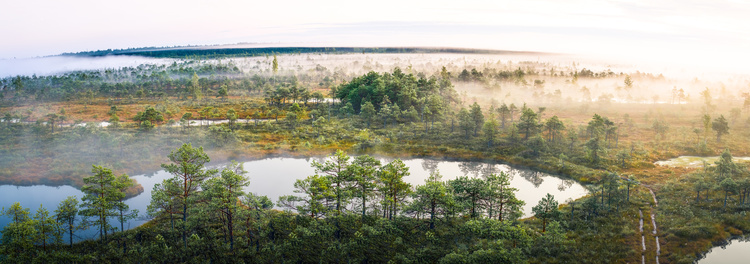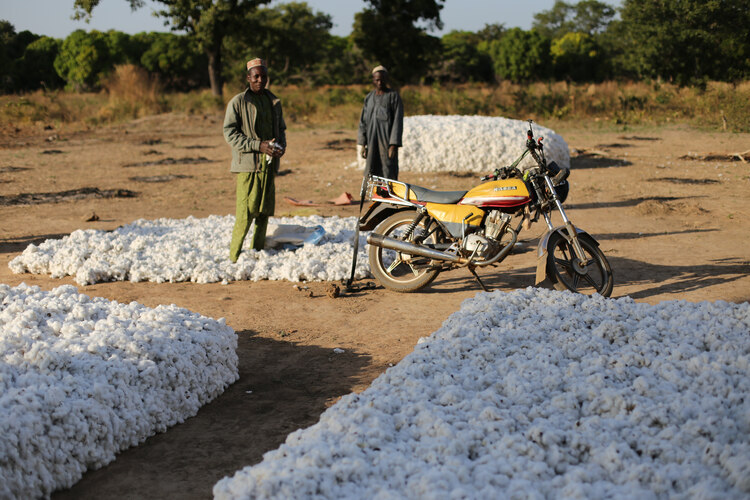
Data shows at least 100 million hectares of healthy land is lost each year to desertification, drought and land degradation. Can anything halt it?
By Tom Howarth
The UN Convention to Combat Desertification (UNCCD) has launched its new ‘Data Dashboard’, a combination of reported figures on land degradation from 126 countries around the world.
Haven’t heard of the UNCCD? Don’t worry; even the most ardent climate activists might be unaware of its existence. Still, if there was ever a time to pay attention to the work the UNCCD does, this would be it.
According to the new global data, between 2015 and 2019, an area roughly twice the size of Greenland went from being healthy and productive to arid and degraded. That equates to approximately 100 million hectares of land per year.
‘Land degradation is the result of human activities that exploit the land, leading to a decline in its utility, biodiversity, fertility and overall health,’ said Barron Orr, lead scientist for the UNCCD. ‘Our current land use and management practices are the main drivers of land degradation. They cause soil erosion worldwide at a rate up to 100 times faster than natural processes can replenish it.’
The Data Dashboard, Orr said, was launched to sound the alarm about the rapid degradation of land around the world.
And sound the alarm, it did. According to the UNCCD, an estimated 1.5 billion hectares of productive land have now been lost, impacting the lives of 1.3 billion people.
‘At current rates, 90 per cent of the land will bear our imprint by 2050,’ said Orr. ‘The effects of land degradation will be felt by most of the world’s population.’

Eastern and Central Asia, Latin America and the Caribbean were the worst hit, with more than a fifth of the total land area in these regions now being classified as degraded. Meanwhile, the rate at which land is being lost in sub-Saharan Africa, Western and Southern Asia, Latin America and the Caribbean is above the global average.
‘The Dashboard’s alarming figures highlight the need for urgent action as escalating land degradation continues to destabilise markets, communities and ecosystems around the world,’ Orr said.
It was against this backdrop that the UNCCD met in Uzbekistan from 13 to 17 November. The 21st session of the Committee for the Review of the Implementation of the Convention (CRIC21) brought together 500 delegates from 196 countries, the European Union, civil society and academia to reflect on progress made since the UNCCD was established in 1994.
On the agenda at CRIC21 was recognising sand and dust storms as a global issue, convening a Gender Caucus to strengthen women’s engagement in efforts to combat land degradation and making recommendations to inform the next UNCCD Conference of the Parties to be held in Saudi Arabia next year.
Crucially, CRIC21 acted as an opportunity to examine the progress made on the UNCCD’s land degradation neutrality (LDN) target, a process not too dissimilar to the Global Stocktake currently underway at COP28.

The UNCCD defines LDN as ‘a state whereby the amount and quality of land resources necessary to support ecosystem functions and services to enhance food security remain stable, or increase, within specified temporal and spatial scales and ecosystems’.
In other words, the pattern of increasingly losing healthy and productive land as a result of our actions must be halted and, ideally, reversed.
To reach such a point, Orr explained, three simultaneous actions are required:
- ‘Avoid further land degradation by maintaining existing healthy land;
- Reduce existing degradation by adopting sustainable land management practices that can slow degradation while increasing biodiversity, soil health and food production;
- And intensify efforts to restore degraded land to a natural or more productive state.’
Light at the end of the tunnel
Despite the bleak global figures, there are some so-called ‘bright spots’ to be found in the data.
In sub-Saharan Africa, Botswana has committed 45.3 million hectares – about three times the area of England – to LDN. Restoration efforts in the country have successfully reduced degraded land from 36 to 17 per cent of its territory.
Meanwhile, in the Dominican Republic, degraded land constituted 31 per cent of the total in 2019, down from 49 per cent four years earlier.

Similar successes were reported in Uzbekistan, the host of CRIC21 and the country with the highest proportion of degraded land in Central Asia.
With wind in its sails following CRIC21, the UNCCD is looking to make its voice heard at COP28 in the United Arab Emirates. On day two of the conference, the International Drought Resilience Alliance (IDRA), which is supported by the UNCCD, announced eight new members had signed on to join, bringing the total to 36 countries and 28 organisations.
The UNCCD is also co-hosting the first ever ‘Land and Drought Pavilion’ at COP28. The Pavilion aims to curate high-level discussions on the importance of healthy land as a climate solution and the need for action on drought resilience.
‘The world’s land is a vital line of defence against climate change, acting as a carbon sink that regulates global temperatures,‘ concluded Orr. ‘At COP28, the UNCCD’s message is loud and clear – sustainable development is unattainable without the foundation of robust, healthy land.’




